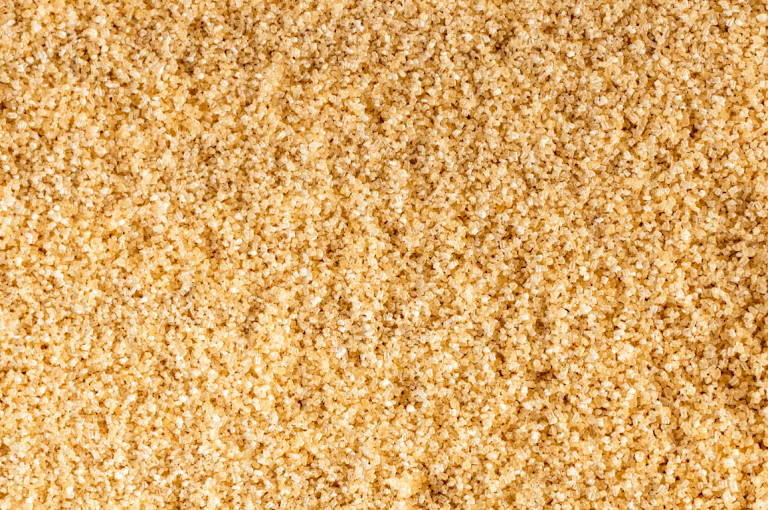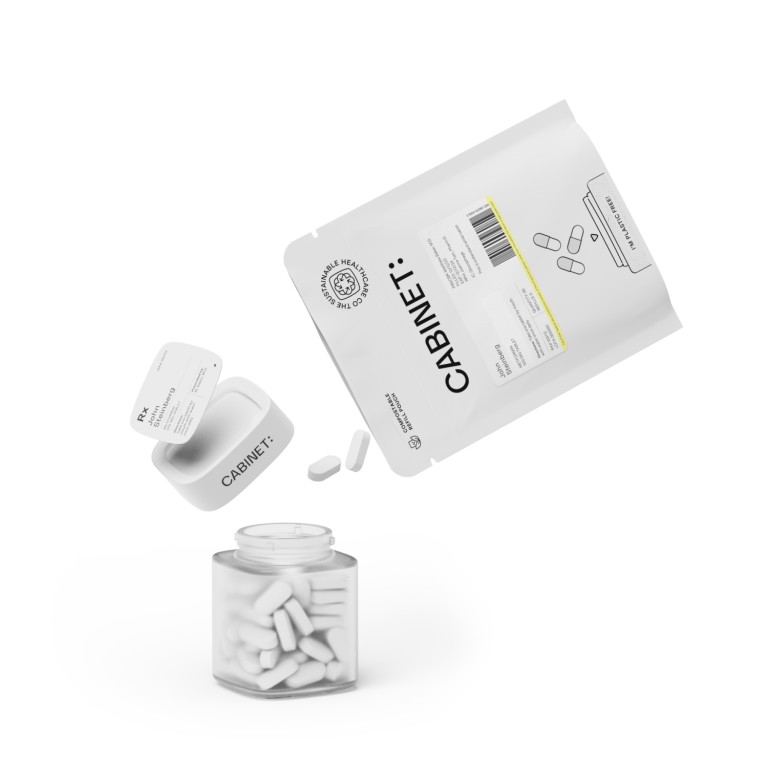Warfarin, commonly known as Coumadin, is a medication often prescribed to prevent blood clots from forming or to treat existing blood clots. It is an anticoagulant that works by decreasing the clotting ability of the blood. If you or a loved one has been prescribed warfarin, it's important to understand how it works and how to use it safely. This article will provide you with valuable information about warfarin, including its role in blood clot prevention, the science behind its mechanism of action, how to use it safely, and tips for living with warfarin.
Understanding Warfarin (Coumadin)
What is Warfarin?
Warfarin belongs to a group of medications known as vitamin K antagonists. It inhibits the production of certain clotting factors in the liver, which are dependent on vitamin K to function properly. By inhibiting these factors, warfarin helps prevent the formation of blood clots.
The Role of Warfarin in Blood Clot Prevention
Warfarin is primarily used to prevent blood clots from forming or to treat existing blood clots in conditions such as deep vein thrombosis (DVT) or pulmonary embolism (PE). It is also prescribed to individuals with certain heart conditions, such as atrial fibrillation, who are at an increased risk of developing blood clots.
According to medical sources, approximately 900,000 people in the United States are affected by blood clots each year, resulting in around 100,000 deaths. Warfarin plays a vital role in reducing the risk of these potentially life-threatening events.
Warfarin's mechanism of action involves interfering with the body's ability to form blood clots by blocking the synthesis of certain clotting proteins. This anticoagulant effect is carefully monitored through regular blood tests to ensure that the dosage is adjusted correctly for each individual's specific needs.
Warfarin Dosage and Monitoring
Patients taking warfarin require close monitoring to ensure the medication is working effectively and that the dosage is within the therapeutic range. Factors such as diet, other medications, and individual differences can impact how warfarin is metabolized in the body.
Healthcare providers often advise patients to maintain a consistent intake of vitamin K-rich foods, as sudden changes in vitamin K consumption can affect warfarin's effectiveness. Additionally, regular blood tests, such as the international normalized ratio (INR) test, are conducted to assess the blood's clotting ability and adjust the warfarin dosage accordingly.
The Science Behind Warfarin
How Warfarin Works in the Body
Warfarin works by interfering with the body's clotting process, preventing excessive clot formation. It specifically targets vitamin K, an essential nutrient needed for the production of clotting proteins.
When warfarin is taken, it blocks the enzyme responsible for recycling vitamin K, thus reducing the amount available for the production of clotting factors. This inhibition slows down the clotting process, reducing the risk of unwanted blood clots.
Warfarin's mechanism of action is particularly crucial in managing conditions such as atrial fibrillation, deep vein thrombosis, and pulmonary embolism. By regulating the clotting process, warfarin helps prevent the formation of blood clots that could lead to serious health complications.
The Relationship Between Warfarin and Vitamin K
While warfarin targets the activity of vitamin K, it's important to maintain a consistent intake of vitamin K-rich foods, as abrupt changes in your diet can affect the effectiveness of warfarin. Your healthcare provider can provide guidance on incorporating vitamin K-rich foods into your diet while on warfarin.
Vitamin K-rich foods include leafy green vegetables like spinach, kale, and broccoli, as well as oils such as soybean and canola oil. Balancing your vitamin K intake with warfarin therapy is essential to ensure the medication's efficacy while maintaining overall health.
Using Warfarin Safely
Dosage and Administration of Warfarin
Warfarin is available in tablet form and is typically taken once daily. The dosage varies from person to person and is based on factors such as the specific medical condition, individual response to the medication, and other medications being taken concurrently.
It is important to carefully follow your healthcare provider's instructions regarding dosage and administration. Regular blood tests, such as the international normalized ratio (INR), will be conducted to monitor the effectiveness of the medication and ensure the dosage is appropriate.
Warfarin works by inhibiting the body's ability to form blood clots, which can help prevent conditions such as strokes, heart attacks, and deep vein thrombosis. It is crucial to take the medication at the same time each day to maintain a consistent level of the drug in your system.
Potential Side Effects and Risks
While warfarin is an effective medication for preventing blood clots, it does come with some potential risks and side effects. Common side effects may include easy bruising, bleeding gums, or prolonged bleeding from minor cuts.
In rare cases, warfarin can cause severe bleeding, which may require immediate medical attention. It is important to promptly report any signs of unusual bleeding or symptoms such as severe abdominal pain or blood in the urine or stool to your healthcare provider.
It is essential to maintain open communication with your healthcare provider while taking warfarin to ensure that any side effects or concerns are addressed promptly. Additionally, certain foods and medications can interact with warfarin, affecting its effectiveness and safety. Be sure to inform your healthcare provider of any changes in your diet or medications to prevent potential complications.
Living with Warfarin
Lifestyle Adjustments While on Warfarin
When taking warfarin, certain lifestyle adjustments may be necessary to ensure its safe and effective use. It is important to maintain a consistent level of physical activity, as both a sedentary lifestyle and excessive physical strain can affect the risk of blood clots and the effectiveness of warfarin.
Additionally, it is important to avoid activities that may increase the risk of injury or bleeding, such as contact sports or activities that may result in falls. Taking precautions and practicing good safety habits can help minimize the risk of potential complications.
Moreover, incorporating stress-reducing activities like yoga, meditation, or deep breathing exercises into your daily routine can also be beneficial while on warfarin. Stress can impact your body's response to the medication, so managing stress levels can contribute to more stable INR levels.
Managing Warfarin Interactions with Food and Other Drugs
Warfarin can interact with certain foods and medications, affecting its efficacy. Vitamin K-rich foods, such as leafy green vegetables, should be consumed consistently in moderation to maintain a steady response to warfarin.
It is important to inform your healthcare provider about all medications, including over-the-counter medications, herbal supplements, and any recent changes to your diet. Some medications, such as antibiotics or anti-inflammatory drugs, may interact with warfarin, potentially increasing the risk of bleeding.
Furthermore, keeping a detailed medication and food diary can help you track your intake and identify any patterns that may affect your warfarin levels. This information can be valuable for both you and your healthcare provider in managing your warfarin therapy effectively.
Frequently Asked Questions About Warfarin
When to Seek Medical Attention
If you are taking warfarin and experience any signs of unusual bleeding, such as excessive or prolonged bleeding, it is important to seek immediate medical attention. Additionally, if you notice symptoms such as severe abdominal pain or blood in the urine or stool, do not hesitate to contact your healthcare provider.
Warfarin, a commonly prescribed anticoagulant, works by inhibiting the body's ability to form blood clots. While this is beneficial in preventing conditions like strokes and heart attacks, it also increases the risk of bleeding. It's crucial to strike a balance between the anticoagulant effects of warfarin and the potential for bleeding complications.
Alternatives to Warfarin
While warfarin has been the standard anticoagulant for many years, several alternatives have emerged in recent years. These newer anticoagulants, such as direct oral anticoagulants (DOACs), offer certain advantages, such as reduced monitoring requirements and fewer interactions with food and medications.
DOACs, including medications like apixaban and rivaroxaban, target specific clotting factors in the blood, providing a more predictable anticoagulant effect compared to warfarin. However, individual factors such as kidney function, cost, and insurance coverage may influence the choice between warfarin and DOACs.
It is essential to discuss the option of switching to alternative medications with your healthcare provider, as the choice depends on individual factors and medical condition.
In conclusion, warfarin plays a crucial role in preventing blood clots and treating clot-related conditions. Understanding how warfarin works, using it safely, and making appropriate lifestyle adjustments can help ensure effective treatment. Communicating openly with your healthcare provider and adhering to their instructions will enable you to manage your condition effectively and reduce the risk of complications. Always consult with a healthcare professional for personalized guidance regarding your specific situation.









